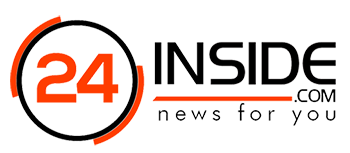Arabic is one of the most rewarding languages to learn. Learning Arabic can open career opportunities and make traveling to popular destinations like Dubai fun. The Arabic alphabet is unique, making learning the language even more enticing. Here’s what to know when starting your Arabic learning journey.
Define Your Goals
The best way to approach Arabic learning is by setting simple, achievable goals. Don’t expect to reach the fluency level after only a few weeks or months. Set goals like being able to read an Arabic newspaper or understand your favorite song after a few months.
Keep adjusting your objectives as you learn. This will keep you on your toes and motivate you to learn more words and phrases.
Choose a Specific Form of Arabic
Arabic is a native language in roughly 25 independent states. They have different pronunciations, accents, and even words. Though the differences are slight, they can be confusing, so you’ll need to choose a specific dialect.
Let your reasons for learning Arabic guide you when choosing. If you’re planning to work in or visit Egypt, learn Egyptian. Learning other forms, like Iraqi Arabic, will benefit you if you’re visiting the Middle East.
Consider learning Modern Standard Arabic if you’re unsure about where you’re going. It’s a standardized Arabic dialect, so most people in Arabic-speaking countries will understand what you’re saying.
Master the Arabic Alphabet
The key to learning Arabic quickly is understanding the alphabet. The Arabic alphabet follows the abjad writing system. This means that it’s mainly comprised of consonants. Readers fill in vowels when speaking, but they use constants when writing.
The alphabet is unique because it doesn’t contain upper cases. You’re also supposed to write from right to left since native speakers read in this direction. Understanding these alphabet rules can make mastering the language easier.
Focus on Common Phrases in the Beginning
Focus on quality over quantity when learning Arabic for the first time. Learning isn’t about the number of words you know but the commonality of the terms you know. Focusing on common vocabulary will make it easier for you to join in on Arabic conversations.
Start by learning common greetings and ways to address people of different ages. Pay attention to phrases used in small talk. Here are some common examples:
- Mar’haba / Salaam meaning hello
- Keef Halak? meaning how are you?
- Ana la a’rif, meaning I don’t know
- Aasif means sorry
You’ll find such words and phrases in almost all conversations. To determine common terms, assess your talks with friends and acquaintances in English. Then translate recurring phrases to Arabic.
Arabic Resources Are a Must-Have
Finding the right learning resource will make understanding Arabic easier. Everyone is unique, so choose a resource that works for you. Here are popular options:
Attend Arabic Classes
This option can be ideal if there are classes near you. You may find learning in a group setting motivating if you enjoy studying with others.
Learn Arabic Online
Online Arabic classes offer the benefits of physical classes without the hassle of traveling to learn. They allow learners to access reading materials and learn at all times, from all locations. This option is worth considering if you’re looking for convenience.
Get an Arabic Dictionary
A dictionary is a must-have, whether you choose online or physical classes. It’ll help you learn the meanings of words so you can confidently engage in conversations.
Ask for guidance when using an Arabic dictionary since it’s not as straightforward as the English dictionary. Arabic words contain root letters, which determine their positions in the dictionary. Learn how to identify root letters to make using this resource easy.
Practice to Gain Proficiency
Practice what you learn to make remembering easier. Set time aside after every class to go over everything you learn.
Join groups that speak Arabic and attend events with Arabic speakers. Join in on discussions, and listen to the speakers’ pronunciations.
You can practice by listening to Arabic songs or watching Arabic films. These options remove the monotony of purely attending classes.
Learning Arabic Is Easy
Learning Arabic could open doors for you and make vacations more interesting. You must define your goals as they’ll keep you on your toes. Then, choose a dialect based on your reasons for learning the language.
Start your learning journey by focusing on the Arabic alphabet and common phrases. Then, broaden your knowledge by investing in the right resources and practicing.








